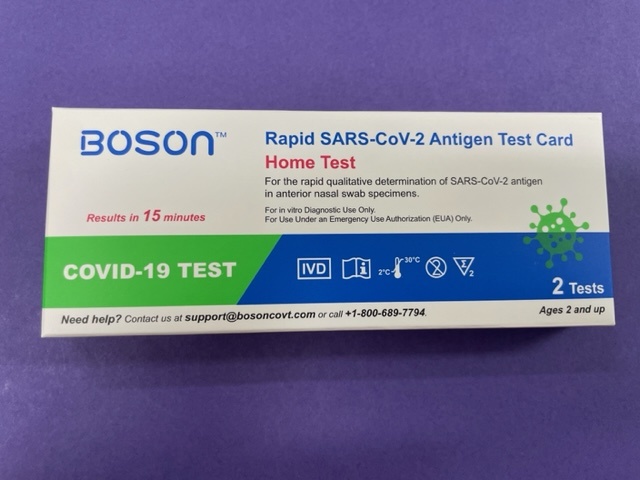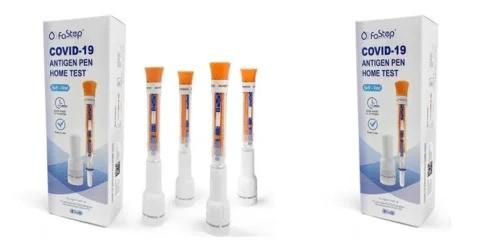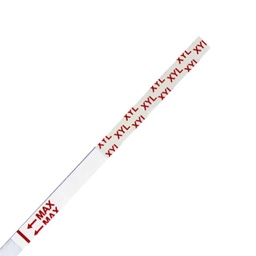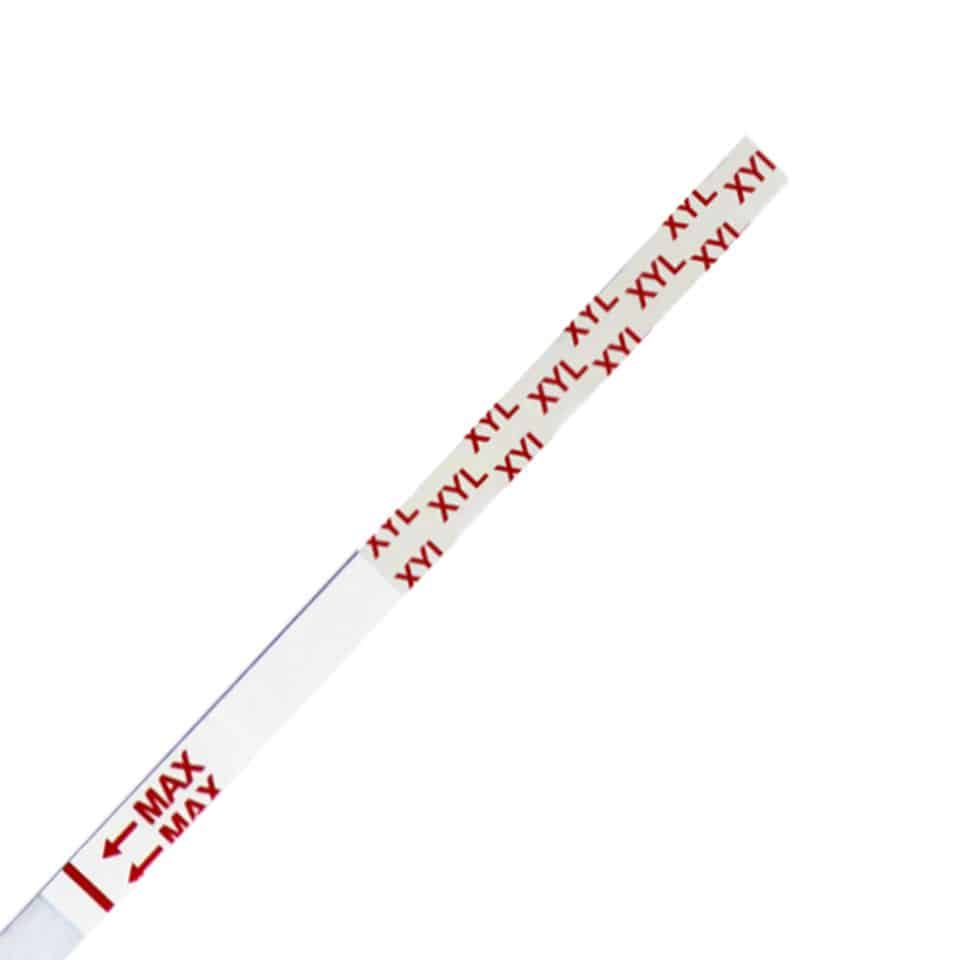XYL Dip stick = Xylazine Rapid test, Dip stick (XL 1000 ng/ml)
What does a Xylazine Drug Test involve?
Xylazine is commonly used as an animal tranquilizer and sedative in veterinary medicine, particularly for large animals, it is also known as tranq dope or zombie drug.
While it was initially discovered as an illicit additive in drug use in Puerto Rico in the early 2000s, it has gained public attention due to its alarming effects on the human body and its association with numerous drug overdose deaths.
A Xylazine drug test is a tool utilized to identify the presence of xylazine in substances. These tests work similarly to other dip drug tests, producing a color change to indicate the presence of the drug.
These dip tests are primarily used in harm reduction settings to examine substances for unexpected or potentially harmful adulterants. Although Xylazine itself is not classified as a controlled substance, the Drug Enforcement Administration has emphasized the importance of understanding its dangers and its reported use as an adulterant in illicit drugs.
Reports have revealed instances where xylazine has been detected in drug mixtures that include illicit opioids like the synthetic opioid fentanyl and heroin.
The combination of Xylazine and fentanyl has contributed to a rising number of overdose deaths in northeastern communities such as New York City and parts of Rhode Island.
Moreover, this issue has been spreading westward, affecting communities near San Francisco and Los Angeles in California.
What are the Effects of Xylazine on Humans?
Xylazine is not intended for human use and is exclusively approved by the FDA for its application in animals.
Currently, it is solely accessible to licensed veterinarians who are trained to administer it to non-human mammals.
However, illicit use of xylazine has emerged, with drug addicts and other unsuspecting individuals experiencing its alarming physical side effects.
Popularly known as the "zombie drug," illicit injection of xylazine has been associated with severe conditions, including decayed skin and skin ulcers around the injection site.
These intense skin wounds have been known to progress into necrotic tissue, sometimes reaching the bones and leading to cases where amputation becomes necessary.
Due to its nature as an animal sedative, xylazine has been found to induce certain effects in humans, such as respiratory depression, muscle relaxation, and low blood pressure.
Furthermore, it produces extreme side effects, including excessive drowsiness and fatigue, which can give users an emaciated appearance. These characteristics partly explain why xylazine has acquired the street name "the zombie drug."
How does the Xylazine Dip Test work?
Remove the Xylazine dip test from its sealed packet as soon as possible and use it. Perform the assay within an hour for the best results.
Then, hold the test near the end, where you can see the product name. To avoid contamination, avoid touching the test membrane.
While holding the dip test vertically, immerse it for at least 10-15 seconds in the urine samples. Do not immerse above the test's maximum line (MAX).
That's roughly one-fifth of the way up the dip test. Remove the Xylazine drug test from the specimen and set it on a non-absorbent flat surface after it has finished. Start the timer and watch for the colored band(s).
Finally, after 5 minutes, read the outcome. After 10 minutes, do not interpret it.
How to Perform Xylazine Tests ?
To check for Xylazine, a drug that has been mixed into illegal street drugs without the knowledge of drug users and first responders, testing is necessary. Xylazine produces similar effects to synthetic opioids like fentanyl, causing intoxication. While naloxone is commonly used by first responders to treat opioid overdoses, it is ineffective in reversing the effects of Xylazine, such as slow breathing.
Although Xylazine is relatively new in public awareness, individuals interested in testing for its presence can obtain a Xylazine test from 12panel.net. This company offers a range of multi-drug tests, including an accurate single-panel test specifically designed to detect Xylazine.
The single-panel Xylazine drug test identifies the presence of Xylazine in urine at a specific cutoff level. These tests are user-friendly and provide quick and precise results within a few minutes. The test administrator simply dips the test dipstick into a urine sample for 10-15 seconds and then places it on a non-absorbent surface. The results can be evaluated at the 5-minute mark.
Results of a xylazine drug test
If Positive,
In the control region (C), just one color band is visible. There is no visible colored band in the test region (T).

If Negative,
On the membrane, there are two contrasting bands. In the test region (T), a different brand is visible than in the control region (C).

If Invalid,
The control band does not show up. Any test results that did not result in a control band at the designated read time must be discarded. Please go over the steps again and do a fresh test. If the issues continue, stop using the kit right away and get in touch with your local distributor.
Xylazine Adverse Reactions
The side effects of xylazine, a tranquilizer commonly used in veterinary medicine, have become a growing concern due to their association with overdoses and fatalities, especially when combined with illicit substances such as fentanyl, other opioids, cocaine, heroin, benzodiazepines, and alcohol. Acting as a depressant on the central nervous system, this drug can lead to various adverse effects, including but not limited to:
Drowsiness and Amnesia: Xylazine can induce significant sedation, causing drowsiness and impairing memory.
Depression of Vital Signs: Xylazine can lead to dangerously low levels of vital signs, including blood pressure, heart rate, and respiratory rate.
Increased Risk of Overdose: The risk of a life-threatening overdose significantly rises when xylazine is combined with opioids and other depressants. Moreover, the effectiveness of naloxone, a medication used to reverse opioid overdose, may be diminished in cases involving xylazine.
Skin Ulcers and Abscesses: Xylazine use has been linked to the development of skin ulcers and abscesses. These ulcers are believed to be a result of xylazine's vasoconstrictive effect on blood vessels combined with reduced blood flow to the skin.
Despite being primarily intended for veterinary use, xylazine has found its way into the illicit drug market, leading to its misuse among individuals who inject drugs. Ongoing research is being conducted to gain a better understanding of xylazine's usage patterns, its impact on the illicit drug supply, and its interaction with synthetic opioids. These research efforts are crucial in addressing the growing crisis of drug overdoses.
Is Xylazine one of the controlled substances?
Xylazine, although not classified as a controlled substance, is a drug regulated by federal law. It has been detected in the illegal drug supply sold by drug dealers in the United States. In the early 2000s, xylazine was first used as an adulterant in drug mixtures, primarily in Puerto Rico.
The increasing presence of xylazine as a recreational drug, unrelated to its intended use as an animal sedative, has raised concerns due to its potent opioid-like effects. During the ongoing opioid crisis, there has been a rise in overdose-related deaths associated with xylazine misuse. In some instances, individuals seeking to prolong the effects of drugs like fentanyl or heroin have turned to abusing xylazine.
When a person overdoses on xylazine and has consumed a drug mixture containing fentanyl, they may exhibit unresponsiveness and grayish skin coloration.
What is Xylazine used for?
Xylazine serves different purposes depending on its context. Illicitly, it is often found in illicit opioid drug mixtures and is sought after by xylazine addicts to prolong the euphoric effects of drugs like fentanyl. It has also been observed that individuals who use injection drugs, particularly mixtures containing heroin, may engage in xylazine use. This information has been reported by the Drug Administration.
On the other hand, in the field of veterinary medicine, xylazine is an approved sedation drug for animals. It has been commonly used and continues to be used in veterinary practices, specifically for large mammals such as cattle, deer, horses, mules, and elk.
Due to the recent discovery of xylazine being used as an adulterant in illicit drugs, the FDA is taking steps to restrict specific imports of xylazine. Collaborating with the DEA and other federal agencies, the FDA aims to ensure that all shipments of xylazine are allocated for legitimate veterinary use.
Can one get addicted to Xylazine?
Frequent usage of the illegal drug xylazine can undoubtedly raise the risk of addiction. As xylazine was introduced as a cutting agent in the illicit drug supply, many fentanyl addicts and those already struggling with drug abuse and opiate use were addicted to these drug mixes.
Because xylazine is virtually usually found in conjunction with fentanyl, there is a strong possibility that this drug combination will become addictive. Because of its strong sedative effects, injecting or swallowing an unknown dose of the dangerous chemical xylazine can be exceptionally devastating.
Some people who have injected trace amounts of xylazine have reported falling asleep for a long time, and some accounts suggest that xylazine use can cause users to go into a coma.



































